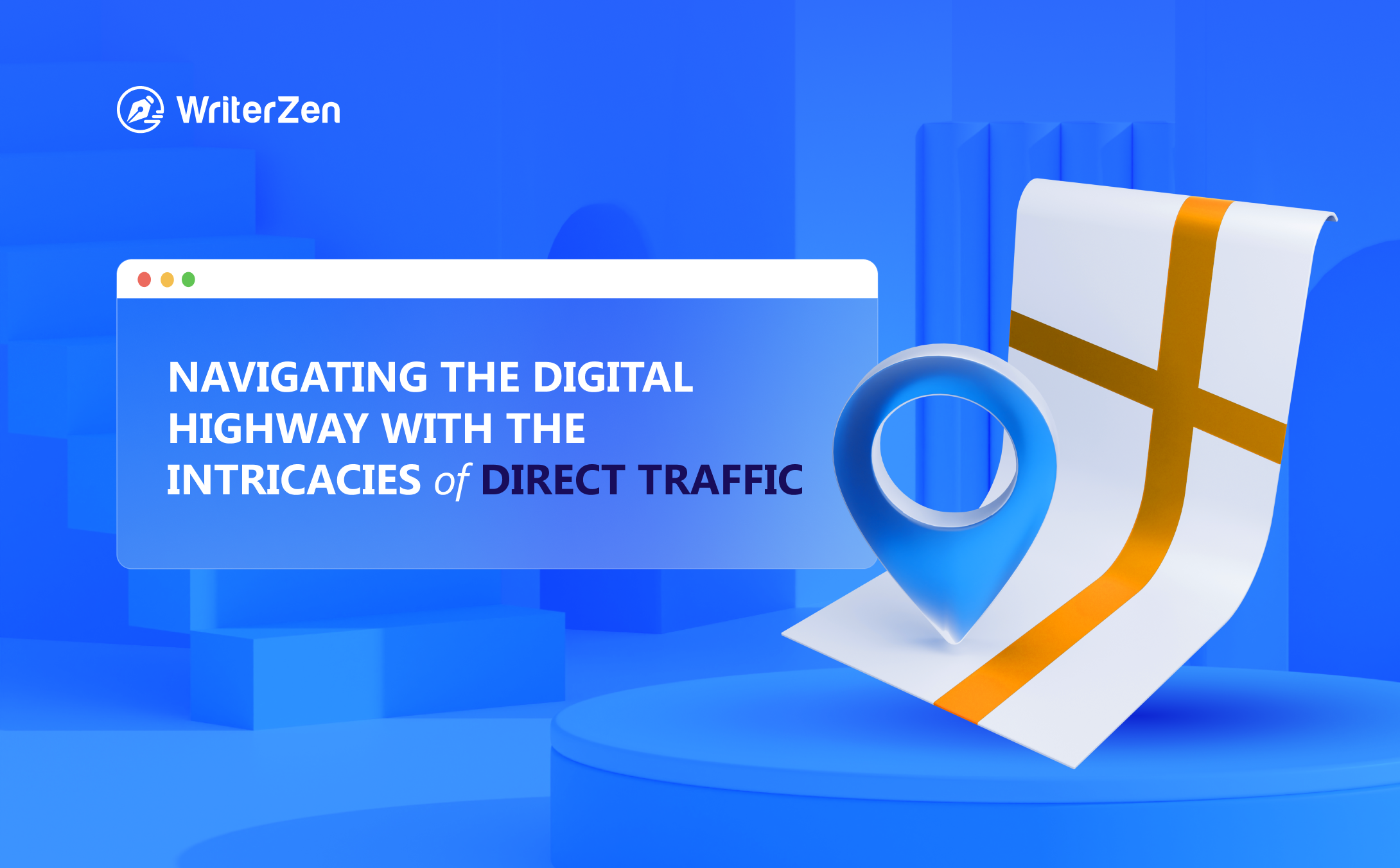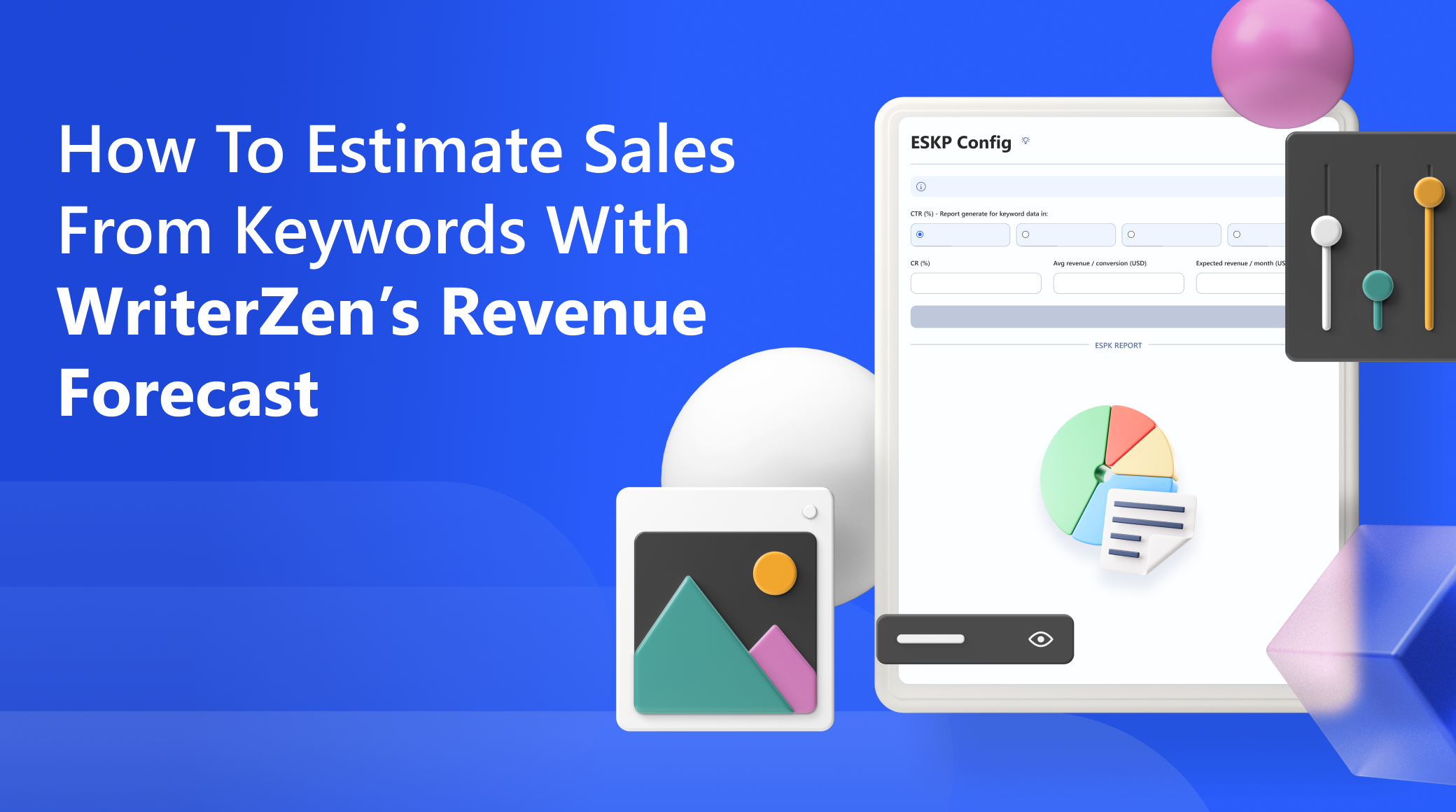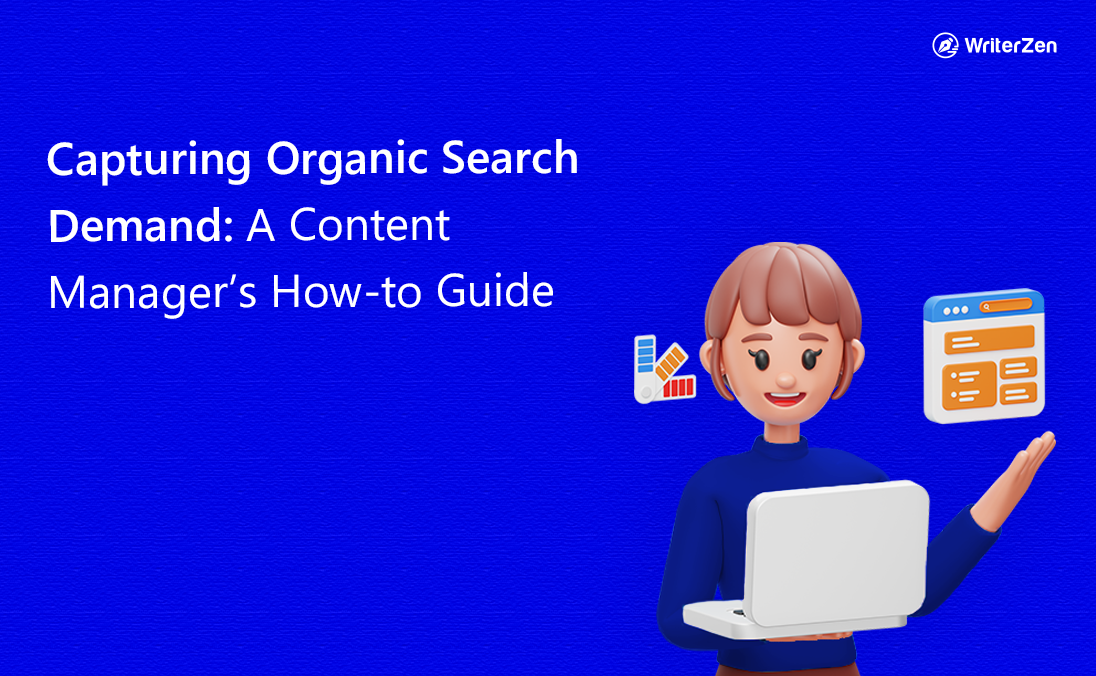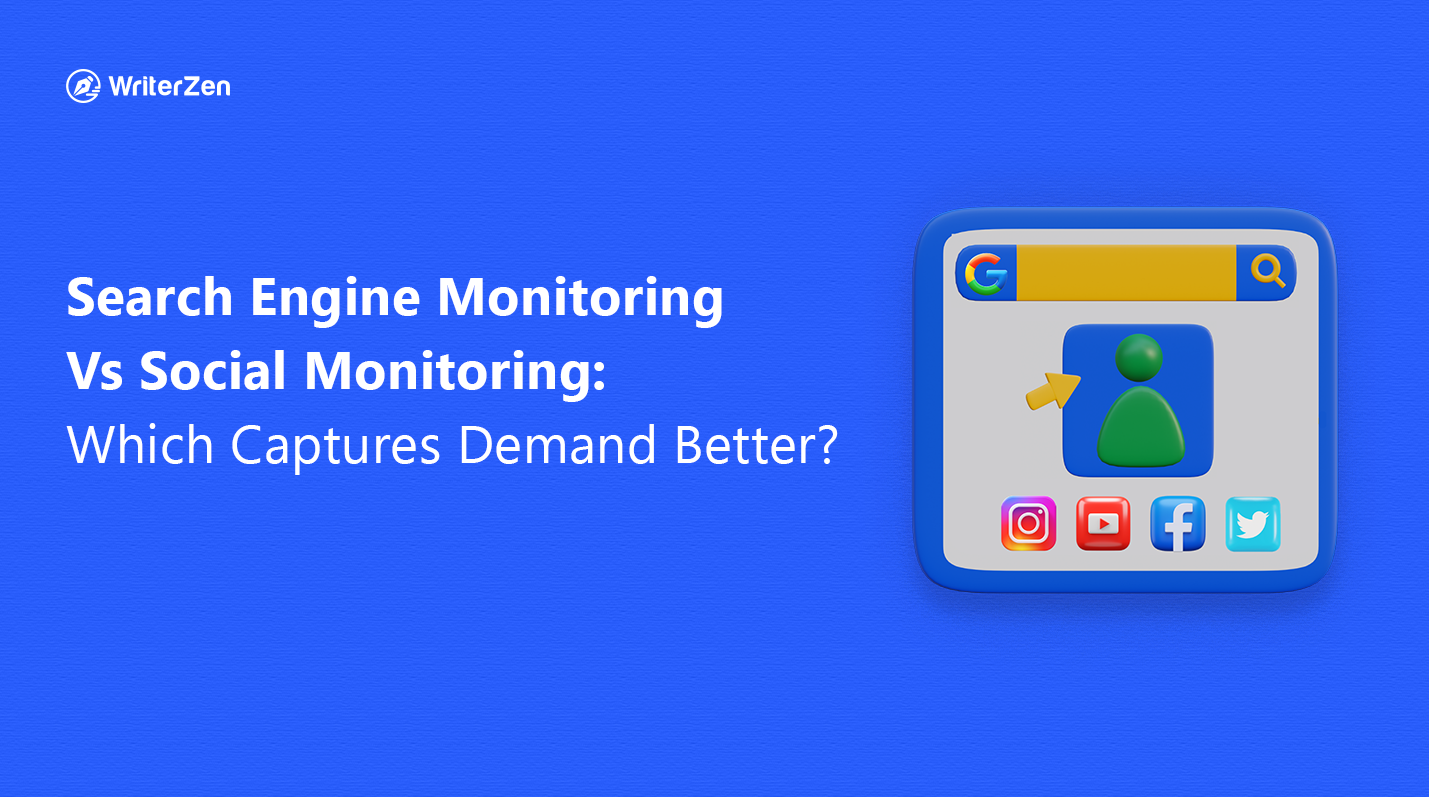In the ever-evolving landscape of online marketing, mastering website traffic is crucial for businesses and marketers alike. Direct traffic, often shrouded in mystery, stands out as a unique and powerful channel that requires a closer look.
In this comprehensive guide, we will embark on a journey to unravel the nuances of direct traffic, exploring its origins, delving into its significance, and uncovering strategies to leverage its potential for optimal online success.
What is Direct Traffic?
Direct traffic is a phenomenon that has long perplexed marketers. In its essence, direct traffic refers to the visitors who land on a website directly by either typing the URL into their browser, clicking on a bookmark, or utilizing a saved link.
This direct connection distinguishes it from other sources of web traffic, such as search engines or social media platforms, where users arrive via referral links.
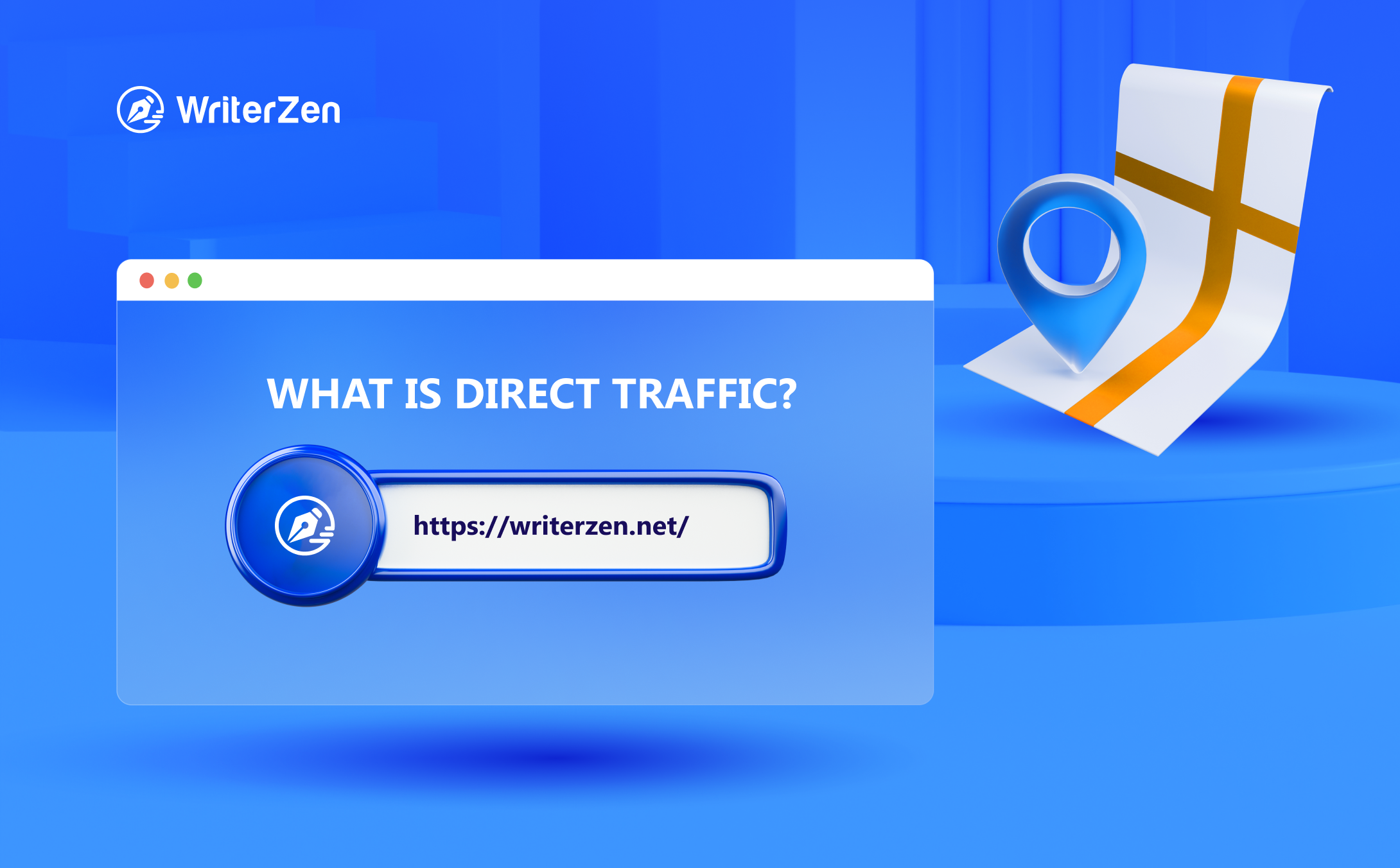
Where Does Direct Traffic Come From?
Below we will take a look at the sources of direct traffic.
-
Typed URLs: Users intentionally enter a website's URL into their browser, indicating familiarity or exposure to the brand offline.
-
Bookmarks: Individuals actively saving a website as a bookmark for quick access contribute to direct traffic, reflecting brand loyalty.
-
Saved links: Users accessing websites through saved links in documents, emails, or notes, resulting in direct traffic.
-
Offline marketing efforts: Traditional advertising methods prompt users to recall and directly type a website's URL into their browsers.
-
Word of mouth: Recommendations from others lead to direct traffic as users directly type the recommended URL.
-
QR codes: Integration of QR codes in offline materials allows users to scan and access websites directly.
-
Email marketing: Clicking on links within emails contributes to direct traffic, especially if users have saved promotional emails.
-
Mobile apps: Saved shortcuts on mobile devices or accessing websites through specific apps result in direct traffic.
-
Dark social: Private sharing through messaging apps or email, leading to direct traffic when recipients click on shared links.
-
Browser autocomplete: Users clicking on suggested URLs from their browser's autocomplete feature, often based on previous visits, contribute to direct traffic.
Why Is Direct Traffic Important?
Direct traffic holds a distinctive significance in the realm of website analytics, playing a pivotal role in shaping a brand's online presence and success. Understanding the importance of direct traffic can illuminate its impact on brand equity, user engagement, and overall marketing strategies.
Brand Loyalty and Trust
Direct traffic is a testament to brand loyalty and trust. When users consciously type a website's URL, it signifies a strong connection and familiarity with the brand. This loyalty is often the result of positive past experiences, effective branding, and a consistently reliable online presence.
Offline Marketing Validation
For businesses investing in traditional advertising or offline marketing initiatives, direct traffic serves as a tangible validation of these efforts. If a user recalls and directly types in a website's URL after encountering it in a magazine, billboard, or TV commercial, it indicates that the offline campaign has successfully driven engagement.
User Intent and Engagement
Direct traffic often reflects high user intent and engagement. Unlike traffic from search engines, where users might be exploring various options, direct visitors have a specific destination in mind. This focused intent can lead to higher conversion rates and deeper engagement with the website's content.
Measuring Offline Impact
Direct traffic is a valuable metric for assessing the impact of offline marketing channels. By monitoring fluctuations in direct traffic, businesses can gauge the effectiveness of their offline strategies, allowing for informed decisions on resource allocation and campaign adjustments.
Consistency in Branding
A surge in direct traffic indicates that a brand's messaging and identity are resonating with the audience. Consistent branding across various channels, both online and offline, contributes to the memorability of the website's URL, fostering a sense of reliability and encouraging users to access the site directly.
Enhanced User Experience
Direct traffic is often associated with a positive user experience. Whether users return to a bookmark or type in the URL from memory, it suggests that they find value in the website's content or services. Focusing on enhancing user experience can further strengthen the bond between the brand and its audience.
Understanding Customer Behavior
Analyzing patterns and trends in direct traffic provides valuable insights into customer behavior. Businesses can identify peak periods of direct engagement, correlate it with specific marketing campaigns, and tailor their strategies accordingly to maximize user acquisition and retention.
Reducing Dependency on Intermediaries
While search engines and social media platforms are crucial for attracting new visitors, direct traffic offers a direct connection between the brand and the audience. Reducing dependency on intermediaries enhances the brand's control over its online narrative, fostering a more intimate relationship with users.
Leveraging the Power of Direct Traffic
Recognizing direct traffic’s importance allows businesses to capitalize on this unique channel, fortifying their online presence and establishing a robust foundation for sustained success in the digital landscape.
Here are some ways to make full use of direct traffic:
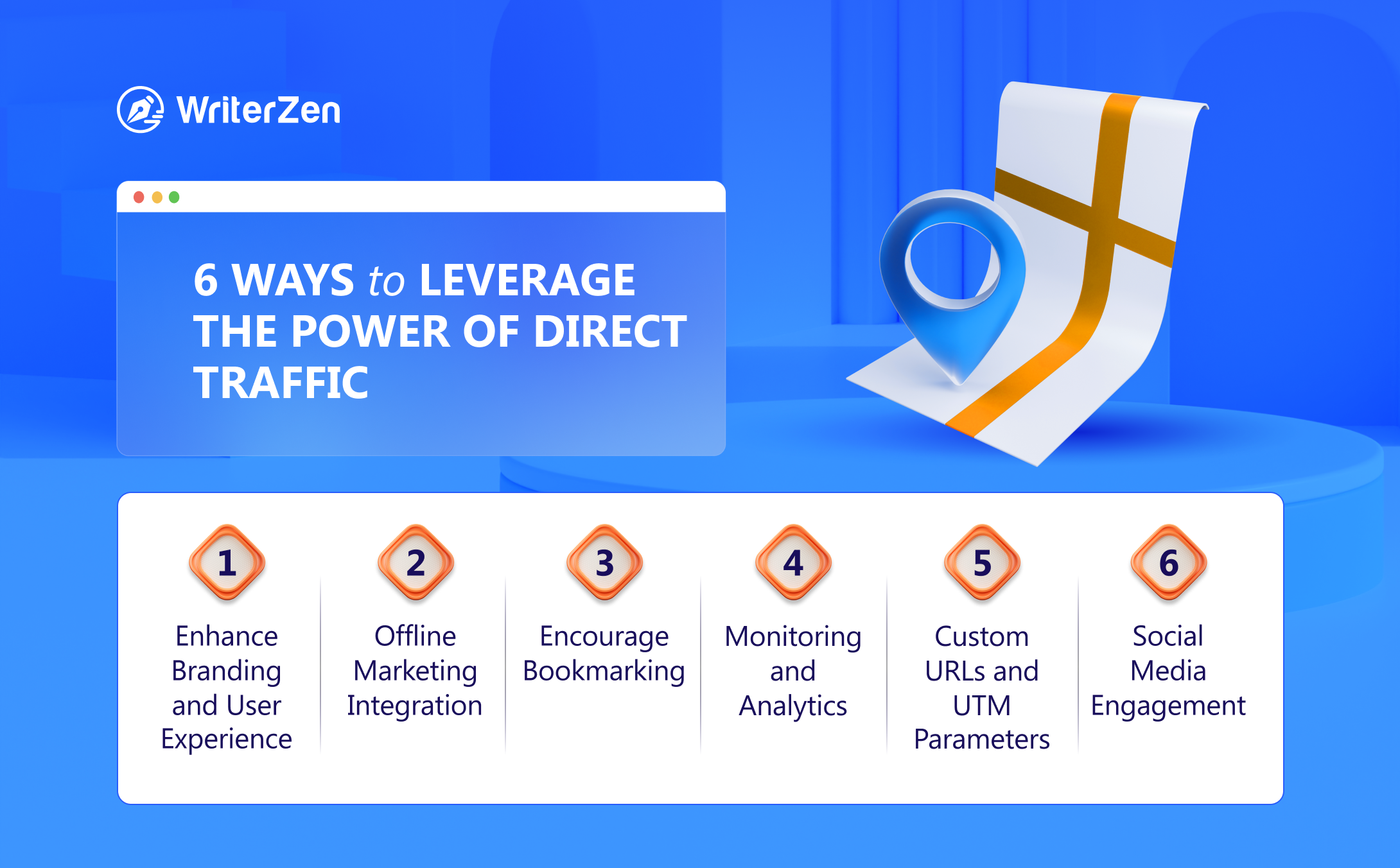
Enhance Branding and User Experience
To harness the potential of direct traffic, investing in building a robust brand presence and ensuring a positive user experience is paramount. Consistent and compelling branding across various channels can contribute significantly to increased direct traffic as users remember and trust your brand.
Offline Marketing Integration
Bridging the gap between online and offline marketing efforts is crucial for boosting direct traffic. Ensure consistent messaging and branding across all platforms to create a seamless experience for users, whether they encounter your brand online or offline. The integration of QR codes in offline materials can also serve as a direct link to your digital presence.
Encourage Bookmarking
Actively encourage users to bookmark your website by providing valuable content, exclusive offers, or a user-friendly interface. Offering incentives for bookmarking, such as access to premium content or special discounts, can further enhance brand loyalty and drive users to return directly.
Monitoring and Analytics
Regularly monitoring website analytics is essential for tracking changes in direct traffic. Analyzing trends and patterns can provide valuable insights into the impact of specific campaigns, offline events, or branding efforts on direct traffic. Tools like Google Analytics offer detailed reports that can aid in understanding user behavior and the effectiveness of marketing strategies.
Custom URLs and UTM Parameters
Employing custom URLs and UTM parameters in your offline and online campaigns can help you track the source of direct traffic more effectively. This practice allows you to differentiate between various channels and campaigns, providing granular insights into what drives users to visit your site directly.
Social Media Engagement
Actively engaging with your audience on social media platforms can indirectly contribute to an increase in direct traffic. By fostering a community around your brand and sharing content that resonates with your audience, you can prompt users to remember and directly access your website.
Final Thoughts
In conclusion, direct traffic is not merely a statistic in your website analytics; it's a direct link between your brand and your audience.
By unraveling the layers of direct traffic and understanding its origins and significance, you can unlock its potential to strengthen your brand, improve user experience, and drive sustained success in the digital landscape.
Embrace the direct connection with your audience, implement strategic measures to enhance brand loyalty, and navigate the digital highway with confidence as you leverage the power of direct traffic for lasting online success.


